Grassland in Namibia's Sesfontein Conservancy sustains springbok, gemsbok and zebra, as well as domestic cattle, sheep and goats. A prolonged drought has upset the balance in many of Namibia's conservancies.
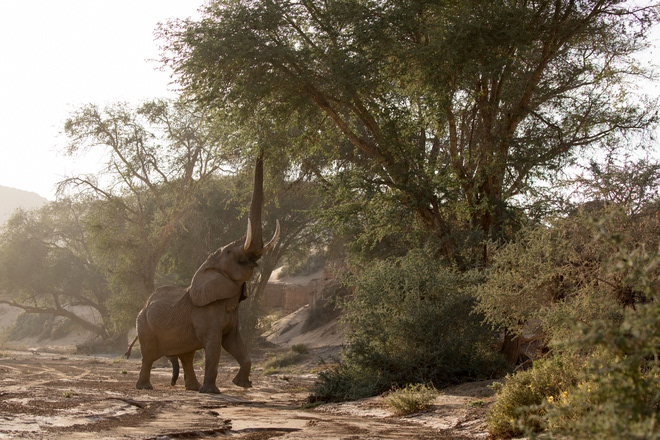
An elephant reaches for seed pods at the top of an Ana tree in the Huab River. Some believe elephants in this region are a distinct subspecies of the African bush elephant, but this is not the case. Desert-dwelling elephants were once more widespread in Africa. ©Anton Crone
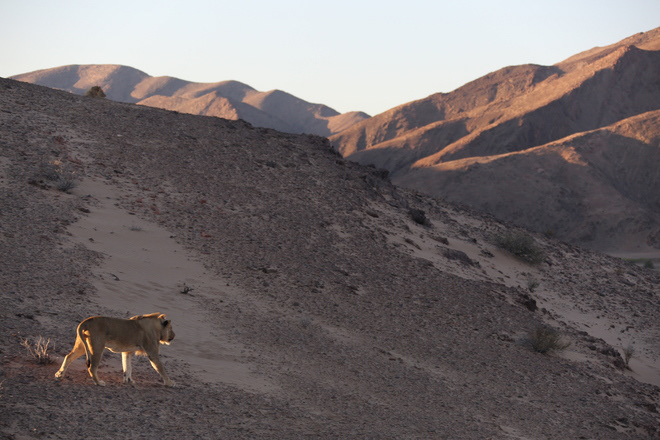
It is believed Torra Conservancy’s situation is aggravated by an over-population of sub-adult males that cannot move into older male territory, so they venture onto local farm land where they prey on livestock. ©Michael Lorentz
Conservationist Garth Owen-Smith surveys a kraal that effectively prevented livestock being attacked by lions in the Huab River.
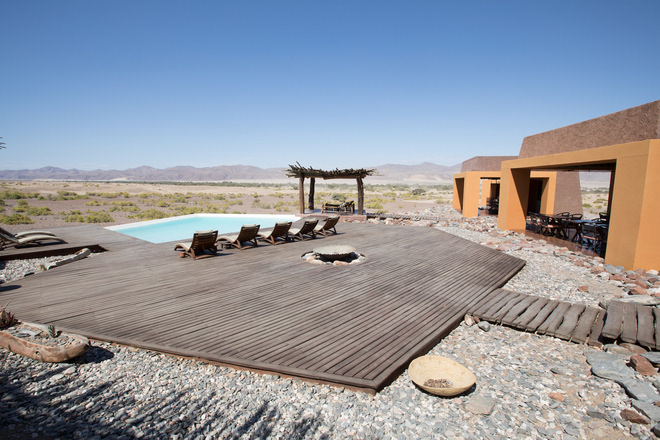
Okahirongo Elephant Lodge in Purros Conservancy. A percentage of the income from tourism goes to the local community.

Herero farmer and wife in the general store after a community meeting in Purros Conservancy.
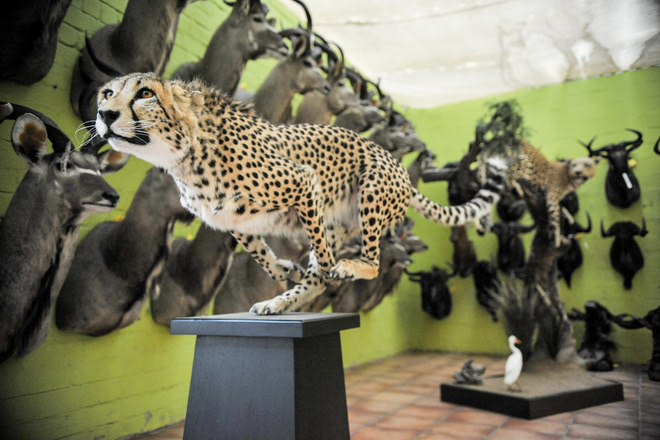
A cheetah hunting trophy mounted at a taxidermist near Windhoek. A percentage of the income from hunting on conservancy land goes to the local community.

A record 172 sheep were killed by lions when they entered a kraal in January this year. Image sourced from Informanté Facebook page.
A traditional Himba woman finds shelter in the shade of her hut in Orupembe conservancy.
A lion surveys the Hoanib River bed. ©Michael Lorentz
Owen-Smith and Jacobsohn talk with the manager of community run Purros Campsite in Purros Conservancy.
Remains of a mountain zebra near a spring in Torra Conservancy. One of many victims of the drought, it starved to death, finding water but no food.

Looking over the relatively lush Hoarusib River valley from a hill in Purros Conservancy.
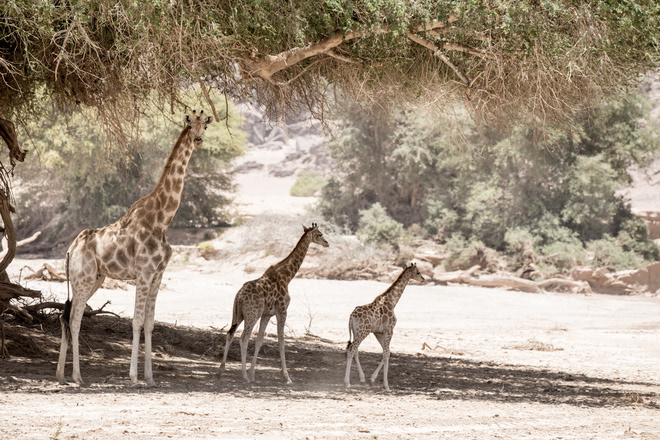
Giraffe are a common sight in the Hoanib River Valley.
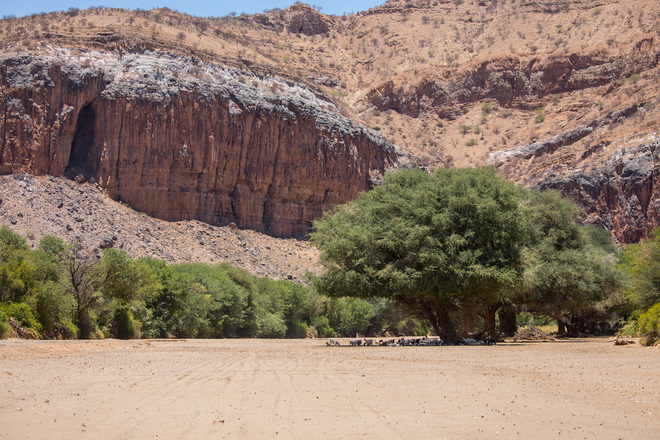
A flock of goats is dwarfed by cliffs in the Hoanib River Valley.
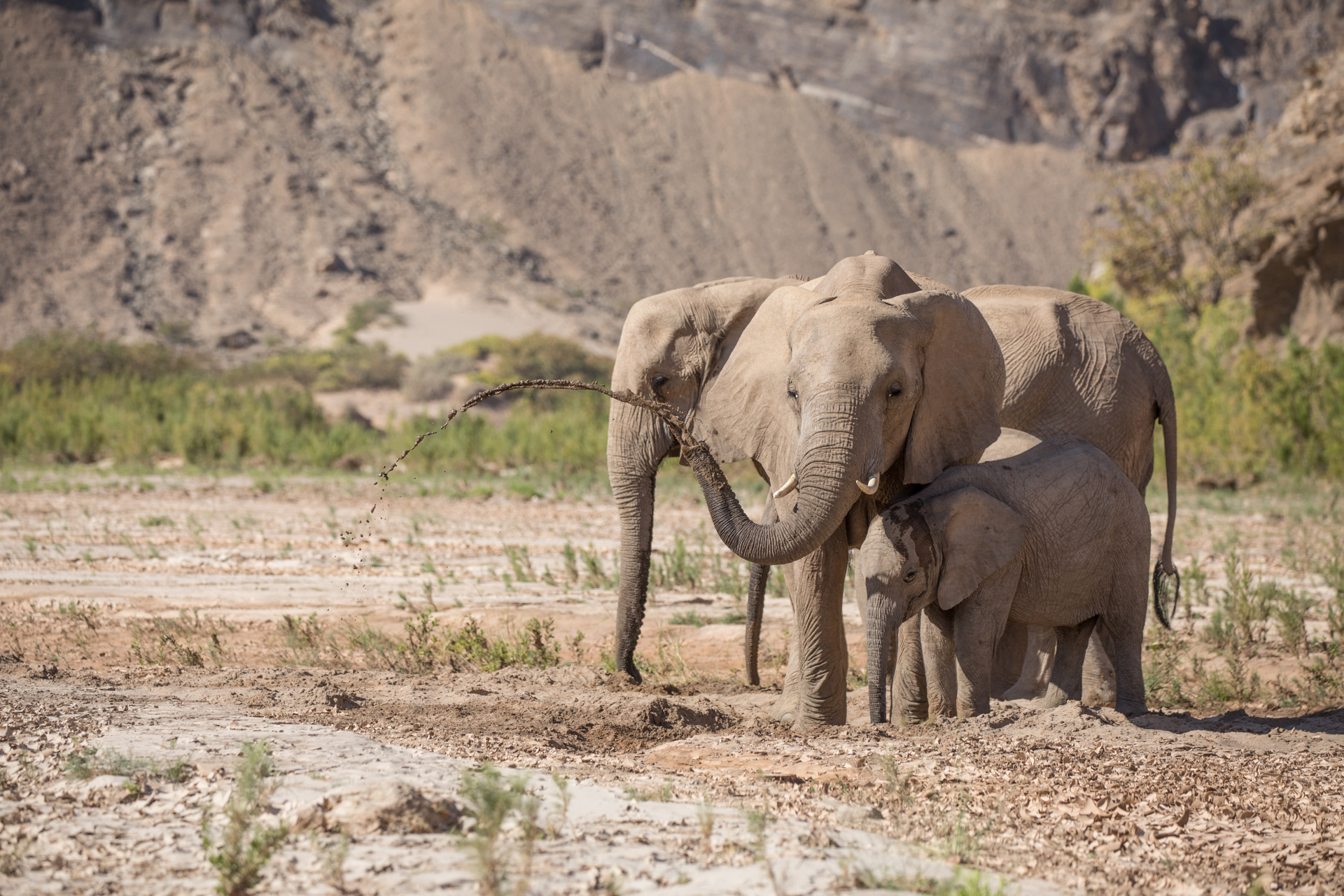
A spring brings sustenance to elephants in the Hoanib River Valley.
Rebecca and Johannes, forced to relocate here to Namibia's arid North West by the South African government in the 1970s.